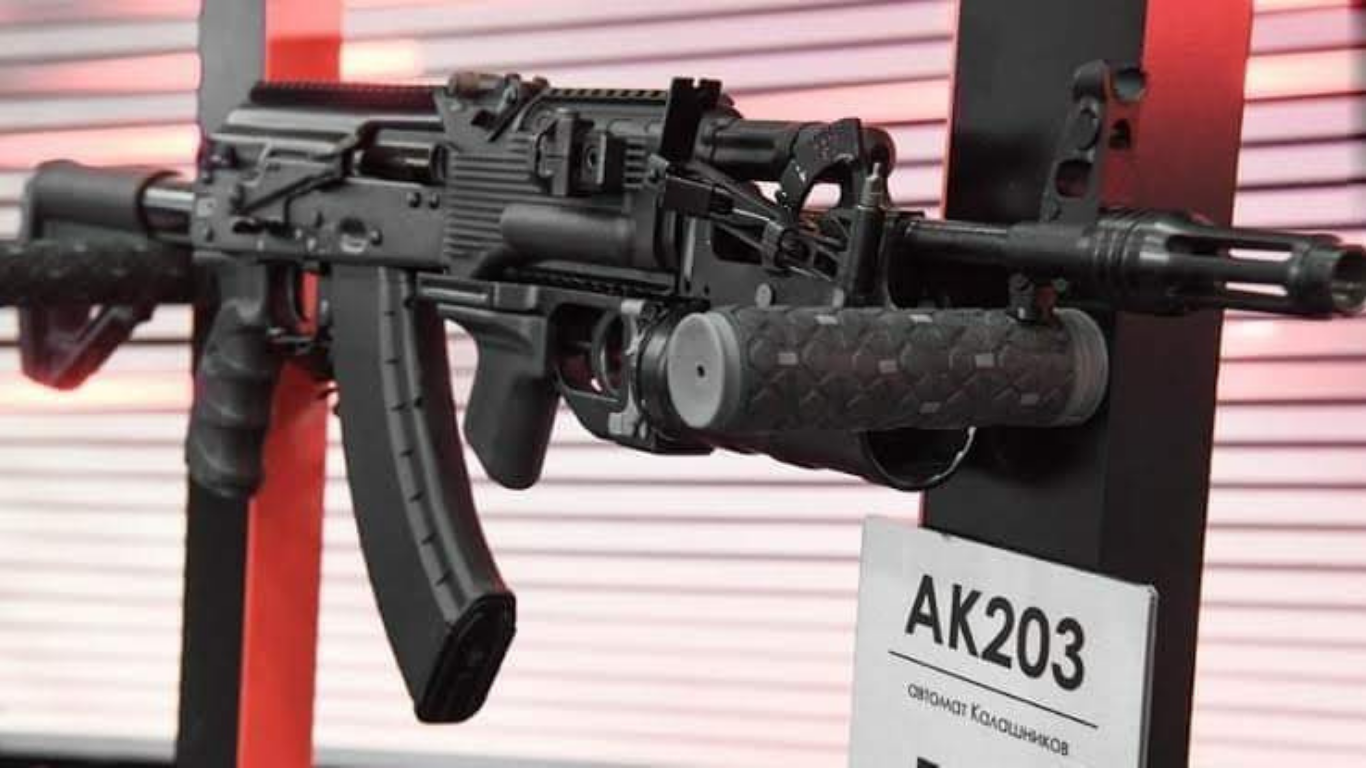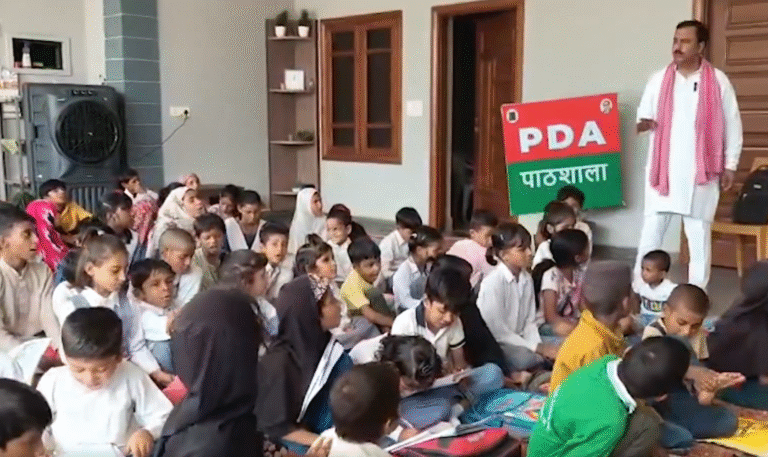
Amethi – The Indian Army is set to receive a major upgrade in its arsenal as the Indo-Russian Rifles Private Limited (IRRPL) in Amethi, Uttar Pradesh, prepares to deliver another batch of AK-203 assault rifles in the coming weeks. This modern rifle, dubbed “Sher” in India, is being produced at the Korwa Ordnance Factory under a joint venture between India and Russia, marking a big step toward self-reliance in defense manufacturing. The latest delivery is part of a Rs 5,200-crore deal to supply 6,01,427 rifles by 2030, nearly two years ahead of schedule, boosting the Army’s firepower along critical borders.
The AK-203, a modern take on the iconic Kalashnikov rifle, is designed for tough combat scenarios, from counterterrorism missions to high-altitude warfare. With a firing rate of 700 rounds per minute and an effective range of 300 meters, it’s a reliable choice for soldiers stationed along the Line of Control (LoC) and Line of Actual Control (LAC). Major General S.K. Sharma, CEO of IRRPL, told reporters, “This rifle is a soldier’s best friend. It’s tough, easy to maintain, and built for India’s diverse battlefields.” The Amethi facility has already delivered 48,000 rifles, with 7,000 more expected by mid-August and an additional 15,000 by December 2025.
A Leap Toward Self-Reliance
The Amethi plant, spread over 8.5 acres, is a shining example of India’s “Make in India” initiative. Launched in 2019 by Prime Minister Narendra Modi and Russian President Vladimir Putin, the IRRPL joint venture involves India’s Advanced Weapons and Equipment India Limited (AWEIL) and Munitions India Limited (MIL), alongside Russia’s Rosoboronexport and Kalashnikov Concern. The project includes full technology transfer, allowing India to produce these rifles with increasing local components. As of now, 50% of the rifle’s parts are made in India, and IRRPL aims to achieve 100% indigenization by the end of 2025.
This push for local production got a boost last year when the Small Arms Factory in Kanpur developed a unique metal matching Russia’s GOST standards, ensuring the rifles are truly “Made in India.” General Manager Surendra Pati Yadav said this breakthrough will make all AK-203 rifles delivered after December 2025 fully indigenous. The factory is also ramping up production, aiming for 12,000 rifles a month by 2026, which could mean 1.5 lakh rifles annually. This speed will help IRRPL meet its target of delivering all 6.01 lakh rifles by December 2030, well ahead of the original 2032 deadline.
Replacing the INSAS Rifle
The AK-203 is set to replace the aging Indian Small Arms System (INSAS) rifle, which has faced criticism for poor performance in combat. Unlike the heavier INSAS, the AK-203 weighs just 3.8 kg and offers better ergonomics, a telescopic buttstock, and a Picatinny rail for modern optics. Its 7.62x39mm caliber provides greater stopping power, making it ideal for India’s challenging terrains. The Army has already inducted 10,000 of the 35,000 rifles delivered in 2024 into active battalions, with soldiers praising their reliability.
The project hasn’t been without challenges. Delays due to the COVID-19 pandemic, payment issues from Western sanctions, and complex technology transfers slowed progress initially. To meet urgent needs, India imported 70,000 AK-203 rifles directly from Russia in 2021. However, with production now in full swing and testing fully localized, the Amethi facility is overcoming these hurdles. Each rifle undergoes 120 quality checks and fires 63 rounds at the factory’s range to ensure top performance.
Beyond the Army: Exports and More
The AK-203’s success extends beyond the Indian Army. The Kerala Police are exploring its use, and Nepal has shown interest in procuring the rifle. IRRPL’s Major General Sharma noted that 10 countries from the Middle East, South Asia, and Africa have inquired about exports. “Our priority is the Indian Army, but we’re ready to supply friendly nations,” he said. The factory also plans to expand its workforce from 260 to 537, with 90% being local hires, boosting Amethi’s economy.
Challenges and Criticism
Some critics argue that the reliance on Russian technology, despite indigenization efforts, limits India’s full autonomy in defense production. Others point to past procurement failures, like the underwhelming Sig Sauer rifles, as a reminder to ensure quality. Still, defense experts see the AK-203 as a game-changer, especially for troops facing tensions along the LAC with China and cross-border threats from Pakistan.
As production ramps up, the AK-203 is poised to become the backbone of India’s infantry, strengthening national security and showcasing the country’s growing defense capabilities.



